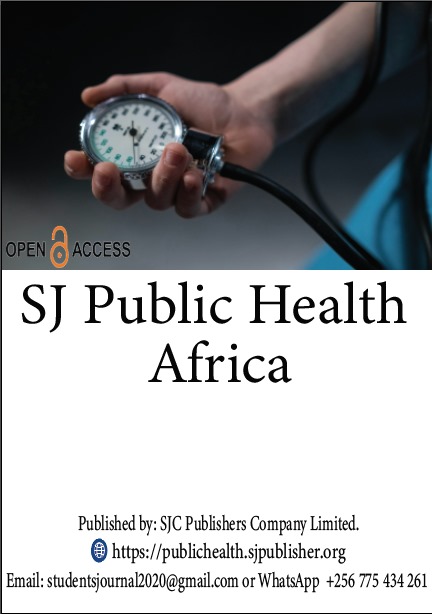FACTORS ASSOCIATED WITH POOR ADHERENCE TO ANTI-TUBERCULOSIS MEDICATION AMONG PATIENTS AGED 20-70 YEARS ATTENDING TB CLINIC AT HOIMA REGIONAL REFERRAL HOSPITAL; A CROSS SECTIONAL STUDY.
DOI:
https://doi.org/10.51168/4aaat925Keywords:
Poor adherence, Anti-Tuberculosis medication, Tuberculosis clinic, Hoima Regional Referral HospitalAbstract
Background:
Aim: To establish the factors associated with poor adherence to anti-tuberculosis medication among patients aged 20-70 years attending the TB clinic at Hoima Regional Referral Hospital.
Methodology:
A descriptive cross-sectional study design employing quantitative and qualitative methods of data collection was used to collect data from 100 respondents who were selected using a simple random sampling method. Data was collected through the use of a pretested questionnaire, analyzed manually using a tally sheet, and presented in tables, figures like pie charts, and bar graphs with frequencies and explanatory remarks.
Results:
The majority of the respondents 70(70%) were males and only 30(30%) were females. More than half, 53 (53%) of the respondents belonged to the age group of 31-40 years while only 06(06%) were in the age bracket of 20-30years. Most of the respondents, 45(45%) were Banyoro whilst only 08(08%) were Bakiga. Half of the respondents 50(50%) stated drug side effects as the reason for poor adherence to Anti-TB medications whilst only 7% mentioned other causes like adverse effects. The majority 70(70%) of the respondents revealed that long-distance contributed to poor adherence to Anti-TB medications while the minority 10(10%) of respondents were undecided.
Conclusions:
From this study, it was concluded that the most contributing factors to non-adherence to treatment were; distance to hospital 70 (70%), treatment side effects50 (50%), and feeling better after a short period of treatment 65(65%). Others were being single with no family support and being peasants was associated with low income.
Recommendation:
The City, region, and hospital authority should emphasize community-based outreach to promote interactions between the community and health workers to improve the knowledge about TB and the need to complete TB treatment.
Downloads
Published
Issue
Section
License
Copyright (c) 2024 TUSABE WYCLIFFE OKOL, JOSEPHINE NASSAZI (Author)

This work is licensed under a Creative Commons Attribution-NonCommercial-NoDerivatives 4.0 International License.
The journal publishes under the Attribution-Noncommercial-NoDerivatives 4.0 international (CCBY-NC-ND 4.0) license which allows you to Share, Copy and redistribute the materials in any medium or format. The licensor cannot revoke these freedoms as long as you follow the license terms;
- Attribution: You must give appropriate credit, provide a link to the license, and indicate if changes were made. You may do so in any reasonable manner, but not in any way that suggests the licensor endorses you or your use.
- Non-commercial: You may not use the material for commercial purposes. Commercial use is one primarily intended for commercial advantage or monetary compensation.
- No Derivatives: if you remix, transform, or build upon the material, you may not distribute the modified material.
- No additional restrictions: You may not apply legal terms or technological measures that legally restrict others from doing anything the license permits.




